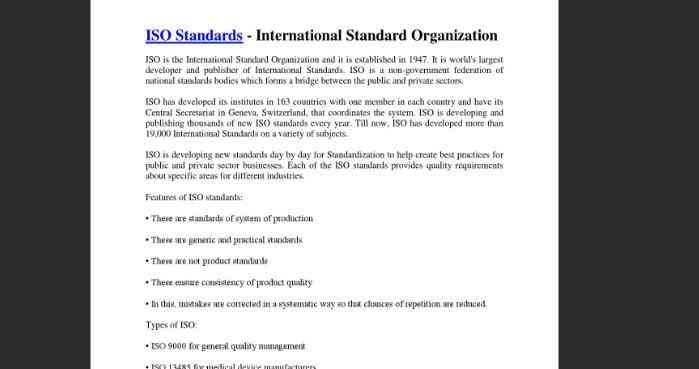|
International
Standard
ISO 23793-1
First edition
Intelligent transport systems —
2024-07
Minimal risk manoeuvre (MRM) for
automated driving —
Part 1:
Framework, straight-stop and in-
lane stop
Systèmes de transport intelligents — Manœuvre à risque minimal
pour la conduite automatisée (MRM) —
Partie 1: Cadre général, arrêt en ligne droite et arrêt dans la voie
Reference number
© ISO 2024
All rights reserved. Unless otherwise specified, or required in the context of its implementation, no part of this publication may
be reproduced or utilized otherwise in any form or by any means, electronic or mechanical, including photocopying, or posting on
the internet or an intranet, without prior written permission. Permission can be requested from either ISO at the address below
or ISO’s member body in the country of the requester.
ISO copyright office
CP 401 • Ch. de Blandonnet 8
CH-1214 Vernier, Geneva
Phone: +41 22 749 01 11
Email: [email protected]
Website: www.iso.org
Published in Switzerland
ii
Contents Page
Foreword .v
Introduction .vi
1 Scope . 1
2 Normative references . 1
3 Terms and definitions . 1
4 Abbreviated terms . 3
5 Function framework . 3
5.1 MRM description .3
5.2 State diagram .3
5.2.1 General .3
5.2.2 ADS active (1) .4
5.2.3 Minimal risk condition (4) .5
5.2.4 Sustained standstill management (5) .5
5.2.5 Manual driving (6) .5
5.3 Functionality .5
5.4 Classification .6
5.4.1 Overview .6
5.4.2 Traffic lane stop.6
5.4.3 Road shoulder stop .7
5.4.4 MRM type change .7
6 Requirements . 9
6.1 General requirements .9
6.1.1 Overview .9
6.1.2 Vehicle and ADS status monitoring .9
6.1.3 MRM triggering conditions .9
6.1.4 Decision-making for MRM types .9
6.1.5 Operational speed of an MRM .9
6.1.6 Implementation of an MRM .9
6.1.7 Human user takeover of the DDT during an MRM .10
6.1.8 Deceleration control .10
6.1.9 Standstill management .10
6.1.10 Resumption of operation after an MRC .10
6.1.11 Collision mitigation and avoidance function .10
6.1.12 Failure mitigation strategy .10
6.1.13 Internal/external status information .10
6.2 Straight stop requirements .11
6.2.1 Operational speed .11
6.2.2 Detection capability .11
6.2.3 Acceleration control .11
6.2.4 Lateral control .11
6.2.5 MRC location .11
6.3 In-lane stop requirements .11
6.3.1 Operational speed .11
6.3.2 Detection capability .11
6.3.3 Acceleration control .11
6.3.4 Lateral control .11
6.3.5 MRC location . 12
7 Performance evaluation test methods .12
7.1 General . 12
7.2 Test conditions . 12
7.2.1 General . 12
7.2.2 Environmental and test course conditions . 12
iii
7.2.3 Test vehicle conditions . 12
7.3 Test requirements. 12
7.3.1 Safety requirements . 12
7.3.2 Test case development . 13
7.4 Basic MRM function test . 13
7.4.1 Test procedure. 13
7.4.2 Test confirmation . 13
7.5 Human user takeover test .14
7.5.1 Test procedure.14
7.5.2 Test confirmation .14
Bibliography .15
iv
Foreword
ISO (the International Organization for Standardization) is a worldwide federation of national standards
bodies (ISO member bodies). The work of preparing International Standards is normally carried out through
ISO technical committees. Each member body interested in a subject for which a technical committee
has been established has the right to be represented on that committee. International organizations,
governmental and non-governmental, in liaison with ISO, also take part in the work. ISO collaborates closely
with the International Electrotechnical Commission (IEC) on all matters of electrotechnical standardization.
The procedures used to develop this document and those intended for its further maintenance are described
in the ISO/IEC Directives, Part 1. In particular, the different approval criteria needed for the different types
of ISO document should be noted. This documen
...














